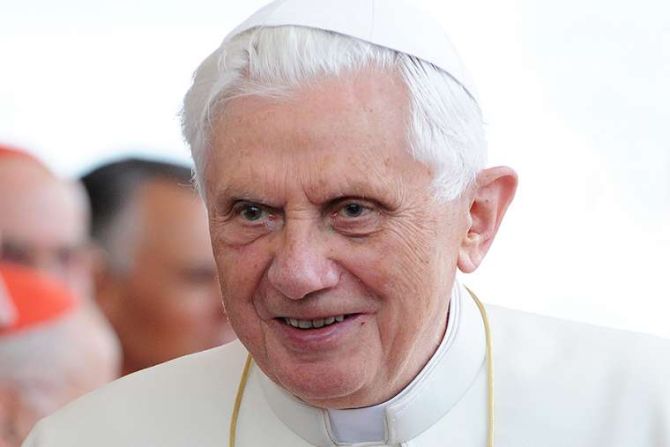Denver Newsroom, Jan 14, 2022 / 13:00 pm
Pope emeritus Benedict XVI served as pope from 2005 to 2013. He was born Joseph Ratzinger on April 16, 1927, at Marktl in the German state of Bavaria.
There is lots to know about this man who became a priest, archbishop, a cardinal, and even a former pope.
1. He is fond of cats, pianos, and Mozart.
When he was a cardinal living in Rome, he would prepare plates of food for stray cats. If friendly cats near his Vatican offices were hurt, he would bandage their wounds.
As of 2005, the year he became pope, Benedict had a black-and-white short-haired cat named Chico living at his home in Bavaria.
When he moved to live in the Vatican apartments, he still had to follow the rules: no cats or dogs allowed.
His other interests include the piano, which he played for years. The composer Mozart is a favorite.
“His music still touches me very deeply, because it is so luminous and yet at the same time so deep,” he told interviewer Peter Seewald in the 1996 book “Salt of the Earth.” “His music is by no means just entertainment; it contains the whole tragedy of human existence.”
His brother Georg, who also became a priest, made a career of music: he became choirmaster at St. Peter’s Cathedral in the Bavarian city of Regensburg.
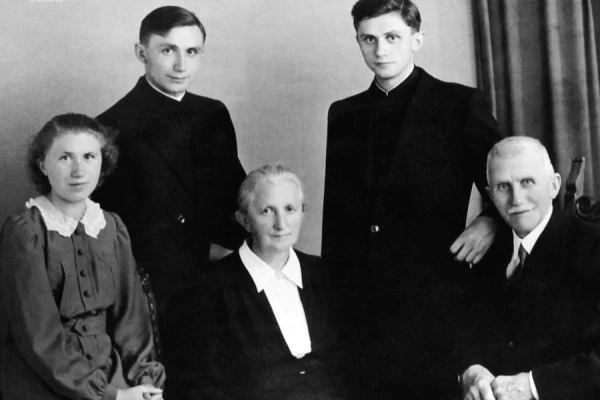
2. As a youth, he was conscripted into the German military. Nazis ridiculed his desire to be a priest.
The future Benedict XVI grew up in the small village of Traunstein in southern Germany at a time when the Nazis came to dominate the country.
Ratzinger’s family was anti-Nazi. His father, a policeman, subscribed to an anti-Nazi newspaper whose editor, Fritz Gerlich, was murdered by the Nazis. A 14-year-old cousin of Ratzinger’s who had Down syndrome was taken away by the Nazis and soon died. He was presumably murdered in their inhuman campaign against those they considered defective.
Young Joseph Ratzinger bristled against mandatory Hitler Youth activities and managed to dodge some, as he later recounted in his memoir “Milestones.” His older sister refused to become a teacher rather than be forced to teach a Nazi-friendly curriculum.
During the Second World War, Ratzinger was conscripted into military service. He and his brother Georg both wanted to be seminarians. When an SS recruiter gathered Ratzinger and other soldiers to a recruitment meeting, his desire to be a priest won him mockery and insults — but also escape from service in the hardline Nazi military group.
In the last months of the war, he deserted, an action punishable by death.
(Story continues below)
During his April 2008 visit to St. Joseph Seminary in Yonkers, New York, Benedict called Nazi Germany “a sinister regime that thought it had all the answers.”
“Its influence grew — infiltrating schools and civic bodies, as well as politics and even religion — before it was fully recognized for the monster that it was,” he said. “It banished God and thus became impervious to anything true and good.”
Though Nazism was defeated, he warned his listeners that there is still a “power to destroy.” But Jesus Christ saves us from this: “The One who shows us the way beyond death is the One who shows us how to overcome destruction and fear: thus it is Jesus who is the true teacher of life.”
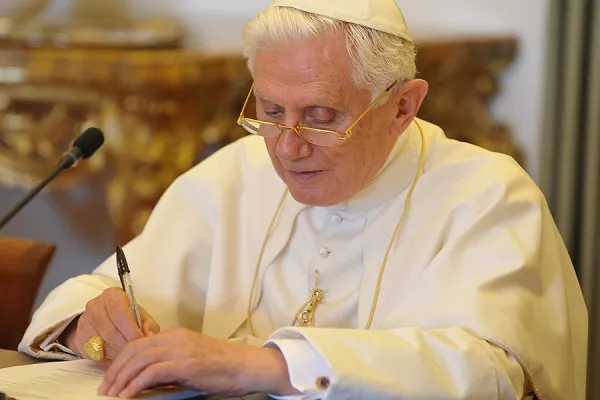
3. After living under the evils of Nazism, Benedict sees the need for truth in authentic freedom.
He warned Americans against darkness of the heart, “a callousness of heart takes hold which first ignores, then ridicules, the God-given dignity of every human being.” There is also a “particularly sinister” darkness of the mind, he said, which manipulates truth, distorts our perception of reality, and tarnishes our imagination and aspirations.
“But what purpose has a ‘freedom’ which, in disregarding truth, pursues what is false or wrong?” he asked. “How many young people have been offered a hand which in the name of freedom or experience has led them to addiction, to moral or intellectual confusion, to hurt, to a loss of self-respect, even to despair and so tragically and sadly to the taking of their own life?”
“Dear friends, truth is not an imposition. Nor is it simply a set of rules. It is a discovery of the One who never fails us; the One whom we can always trust. In seeking truth we come to live by belief because ultimately truth is a person: Jesus Christ. That is why authentic freedom is not an opting out. It is an opting in; nothing less than letting go of self and allowing oneself to be drawn into Christ’s very being for others.”
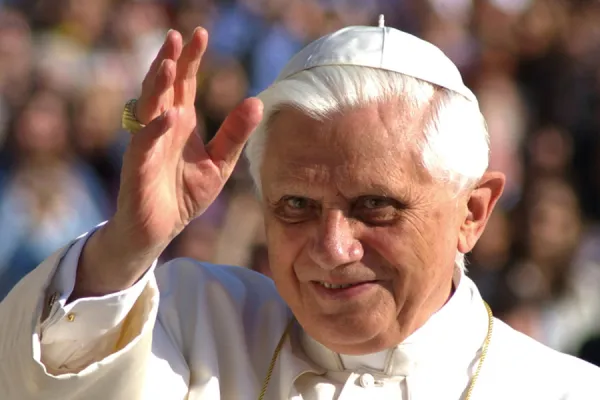
4. He took the name Benedict in honor of a pope and a saint.
In a Wednesday general audience soon after his election in April 2005, he explained that he chose the name Benedict as a link to Pope Benedict XV who “guided the Church through the turbulent times of the First World War.” He said the name also evoked the sixth-century monastic leader St. Benedict of Nursia and his place in forming the “irrefutable Christian roots of European culture and civilization.”
As pope, Benedict often spoke of the need to evangelize. “There is no greater priority than this: to enable the people of our time once more to encounter God, the God who speaks to us and shares his love so that we might have life in abundance,” he said in his 2010 apostolic exhortation Verbum Domini.
5. Benedict XVI made major moves against clergy who abused children, but was recently faulted for his handling of four cases while he was the head of the Munich Archdiocese.
Hundreds of priests who had committed sex abuse were laicized under Pope Benedict. This was a continuation of his previous work at the Congregation for the Doctrine of the Faith, which acquired increased authority over clergy sex abuse cases in 2002.
Two months into his papacy, Benedict disciplined Father Marcial Maciel, the charismatic and influential founder of the Legionaries of Christ who had long been accused of sexually abusing seminarians and was later revealed to have led a deeply scandalous double life.
At times, controversy has arisen over the claim that Benedict XVI, as the Archbishop of Munich and Freising from 1977 to 1982, mishandled or covered up for a sexual abuser. These claims surrounding serial sex abuser Father Peter Hullermann have been firmly rejected by the Vatican and Benedict’s close aide Archbishop Georg Gänswein.
The vicar general at the time has taken full responsibility for a decision to assign the priest from outside the diocese to a parish without any pastoral restrictions, where Hullermann was able to abuse again.
On Jan. 20, 2022, the Munich archdiocese released an eagerly awaited report on its handling of abuse claims from 1945 to 2019. The investigative study faulted Benedict for his handling of three other cases, in addition to the one involving Hullermann.
In two of the three new cases, clerics committed abuse while the future pope was in office. While the priests were criminally sanctioned by secular courts, they continued to perform pastoral duties, and no action was taken against them under canon law, according to the report.
In a third case, a cleric convicted by a foreign court worked in the Munich archdiocese. In a briefing to the media, one of he report's authors suggested the future Benedict XVI knew of the priest's history, but the pope emeritus strongly denies the allegations.
According to German media, Benedict sent 82 pages of observations to investigators compiling the report.
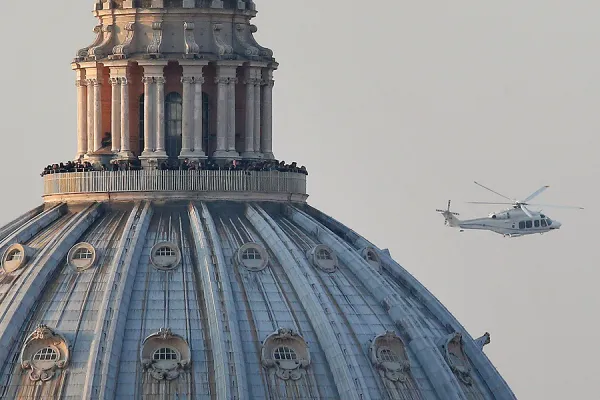
6. He was the first pope to resign in almost 600 years.
On Feb. 11, 2013, the 85-year-old Benedict shocked the world with a Latin-language announcement of his retirement. He cited his advanced age and lack of strength as reasons he was unsuitable to exercise his office.
On Feb. 28, the day his resignation took effect, Benedict traveled from Vatican City to Castel Gandolfo by helicopter.
“I’m simply a pilgrim who is starting the last stage of his pilgrimage on Earth,” he said in his final words as pontiff. “Let’s go ahead together with the Lord for the good of the Church and of the world.”
The unusual situation of a former pope meant that Benedict effectively “co-authored” an encyclical with his successor.
Pope Francis incorporated Benedict’s unfinished text in his 2013 encyclical Lumen Fidei, declaring it a “work of four hands.”
Benedict XVI’s encyclicals are Deus Caritas Est (2005), Spe Salvi (2007), and Caritas in Veritate (2009) about the Christian virtues of love and hope.
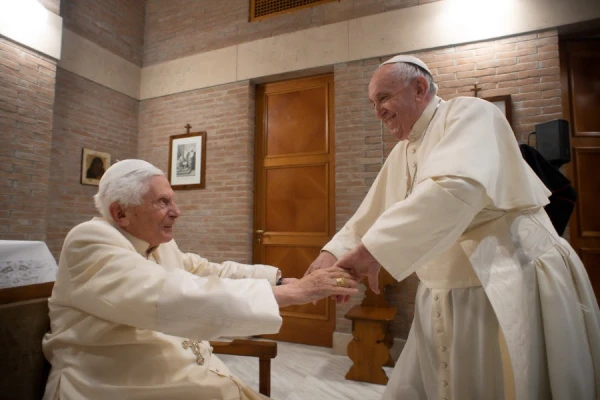
7. Pope Francis has called Benedict the ultimate grandfather.
Benedict is the “grandfather of all grandfathers,” as far as Pope Francis is concerned.
“I have said many times that it gives me great pleasure that he lives here in the Vatican, because it is like having a wise grandfather at home. Thank you!”
Those were the words of the current pope to his predecessor on Sept. 28, 2014, at a meeting between Pope Francis and elderly people from around the world — including Benedict.
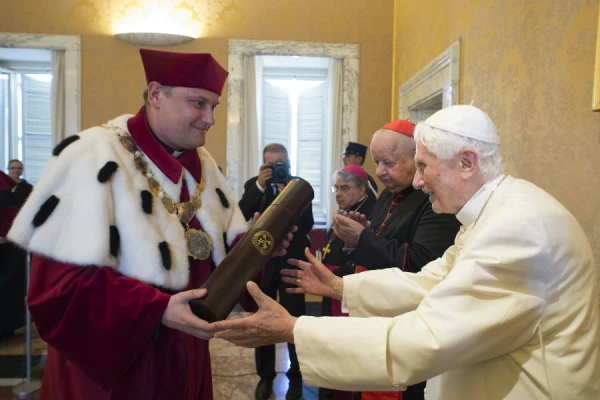
8. Benedict is a deep thinker who stresses both faith and reason in Christian life and in Western culture.
In his homily ahead of the 2005 conclave that elected him to the papacy, Ratzinger spoke of a “dictatorship of relativism that does not recognize anything as definitive and whose ultimate goal consists solely of one’s own ego and desires.”
He stressed that Jesus Christ is “the measure of true humanism” and a mature faith and friendship with God serves as a criterion to distinguish “the true from the false, and deceit from truth.”
His books include “Introduction to Christianity,” a compilation of his university lectures, and “Jesus of Nazareth,” an effort to explain Jesus Christ to the modern world. Before his election as pope, he gave two popular interviews with the German journalist Peter Seewald, published under the titles “The Ratzinger Report” and “Salt of the Earth.”
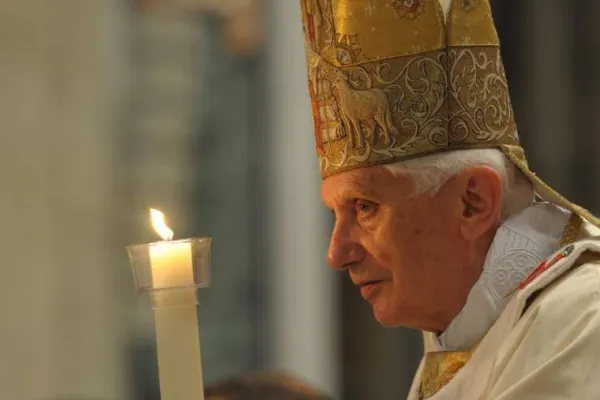
9. His pontificate sought to inspire renewal.
Benedict’s papacy was marked by efforts at cultural, intellectual, and spiritual renewal, including liturgical reform. He also helped strengthen the Church in the wake of the Second Vatican Council’s reform efforts. Benedict himself had been at the 1960s ecumenical council, where he served as an expert for Cardinal Joseph Frings, the Archbishop of Cologne.
Benedict rejected interpretations of the council that stressed “discontinuity and rupture.” Rather, he said, the momentous council should be seen in the spirit of “continuity” and “reform.”
His efforts to establish a sound interpretation of Vatican II lasted through the end of his papacy. On Feb. 14, 2013, he said that the council was at first wrongly interpreted “through the eyes of the media” which depicted it as a “political struggle” between different currents within the Church.
This “council of the media” created “many calamities” and “so much misery,” with the result that seminaries and convents closed and the liturgy was “trivialized.”
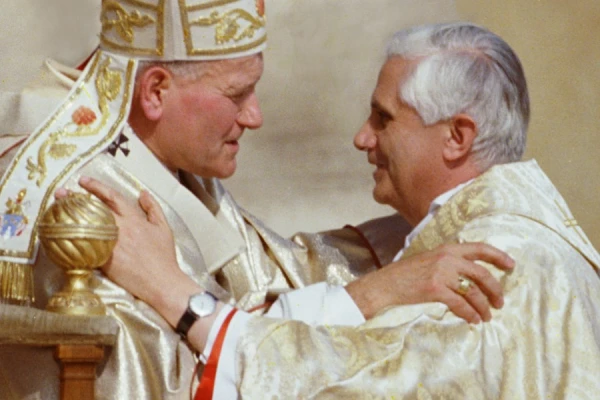
10. He was a close collaborator of St. John Paul II.
The then Cardinal Ratzinger served St. John Paul II as prefect of the Congregation for the Doctrine of the Faith, a position he held for more than 20 years.
“I was at his side and came to revere him all the more,” Benedict would recount. “My own service was sustained by his spiritual depth and by the richness of his insights. His example of prayer continually impressed and edified me.”
Benedict was involved in the preparation of the Catechism of the Catholic Church and the clarification of Catholic doctrine. At times, his work countered influential heterodox Catholics in the United States and Western Europe, actions which would later provoke negative reaction to his election to the papacy.
As pope, Benedict XVI presided at the May 1, 2011, beatification of John Paul II.
“John Paul II is blessed because of his faith, a strong, generous, and apostolic faith,” Benedict XVI said at the time. “By his witness of faith, love and apostolic courage, accompanied by great human charisma, this exemplary son of Poland helped believers throughout the world not to be afraid to be called Christian, to belong to the Church, to speak of the Gospel.”
“In a word: he helped us not to fear the truth, because truth is the guarantee of liberty. To put it even more succinctly: he gave us the strength to believe in Christ, because Christ is ‘Redemptor hominis,’ the Redeemer of man.”


